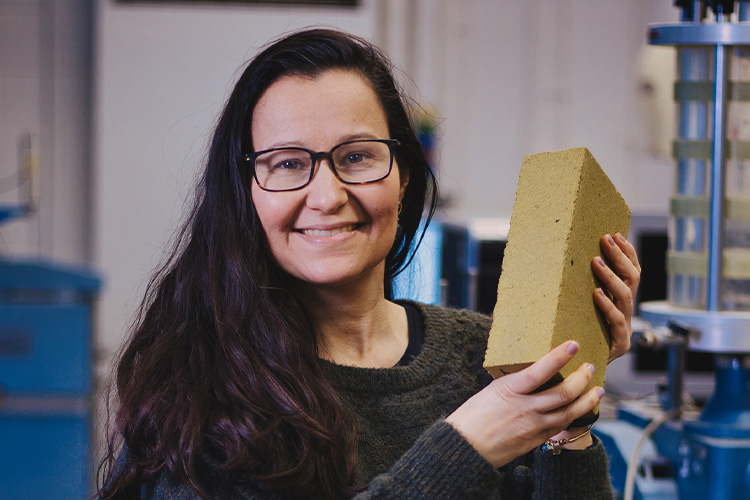

COP28 helped devise strategies that prioritise sustainable development within the built environment, writes Professor Gabriela Medero, Associate Principal for Enterprise at Heriot-Watt University
December 21, 2023 | Gabriela Medero | UAE | Facilities Management

Residential and commercial structures contribute to approximately 37% of carbon emissions and account for about 34% of final energy consumption, along with a significant portion of extracted natural resources. Additionally, urban areas are responsible for over 70% of the total global greenhouse gas emissions, further highlighting the role of the built environment in climate change. A substantial majority of the buildings projected for existence by 2050, particularly within urban zones, is yet to be constructed. This underscores the crucial need for climate action, both in terms of mitigation and adaptation through the transformation of these buildings. Failure to take decisive measures will only increase the environmental harm stemming from building and construction activities. Moreover, inadequate urban planning, inefficient infrastructure, and reliance on fossil fuels exacerbate the environmental toll, posing significant challenges to sustainability efforts worldwide.
COP28: The Perfect Platform
COP28 offered a crucial platform to policymakers, industry leaders, and stakeholders to collaborate and devise strategies that prioritise sustainable development within the built environment. It also presented an opportunity to nations to set ambitious targets and agreements that address emissions reductions, energy efficiency standards, resource efficient approaches and sustainable urban development. These agreements could serve as catalysts for transformative change, encouraging the adoption of renewable energy sources, green building practices, circular economy approaches and low-carbon technologies. The conference helped enact policies and commitments that mitigate the sector's environmental impact while promoting resilience and innovation by promoting dialogue and cooperation.
Green Buildings: A Financial Roadmap For Emerging Markets
Urban centres within developing economies are experiencing rapid expansion to accommodate increasing population growth and swift urbanisation. A majority of this expansion is anticipated to take place within residential construction, particularly within middle-income nations. Addressing the need for new constructions by adopting green building practices has the potential to catalyse sustainable, low-carbon economic advancement while establishing a foundation for skilled employment opportunities within emerging markets for an extended period.
According to a report by the International Finance Corporation, green buildings represent an enormous low-carbon investment opportunity in emerging markets of 24.7 trillion USD by 2030. The increasing demand for sustainable infrastructure presents a vast economic opportunity for emerging markets. Adopting green building practices can stimulate local industries, generating jobs in manufacturing, technology, and construction sectors while fostering a skilled labour force proficient in sustainable methodologies. Encouraging the widespread adoption of green building practices is crucial in reducing the built environment's carbon footprint. COP28 did all this and more by putting a spotlight on the importance of sustainable construction materials, energy-efficient designs, and net-zero building standards.
The Importance Of Collaboration
The UAE is a great example of innovation and sustainable development within the built environment. The country, known for its forward-thinking approach, has actively embraced cutting-edge technologies and sustainable initiatives to tackle environmental challenges. Likewise, COP28 too stood as a crucial platform encouraging collaboration among governmental bodies, private enterprises, academic institutions, and local communities. This collaborative effort aimed to catalyse the inception, refinement, and adoption of groundbreaking technologies, sustainable design approaches, and robust infrastructure solutions to enhance environmental resilience.
In cities like Dubai and Abu Dhabi, monumental strides are already being made in the form of eco-friendly sustainable urban communities like Masdar City. These structures incorporate innovative designs, renewable energy sources, and advanced materials to minimise energy consumption and environmental impact. Moreover, the UAE has shown a commitment to nurturing collaboration across sectors to drive sustainable development. COP28's emphasis on encouraging collaboration and innovation within the built environment aligned with the UAE's trajectory, showcasing the transformative power of partnerships and innovative strategies in driving sustainable development and resilience against climate change. Such collaborative endeavours, in addition to advancements in technology, design, and infrastructure, promise to pave the way for a more sustainable and resilient future globally.
The Crucial Role Of Universities
The key role of universities in advancing sustainability and confronting climate change cannot be emphasised enough. Universities play a crucial part by providing essential research, expertise, and inventive solutions important for addressing these pressing global issues. They possess the ability to shape policy dialogues, raise public consciousness, and educate the forthcoming generation of leaders about the significance of environmental stewardship.
During this momentous occasion, Heriot-Watt University Dubai dedicated two floors of its campus in Dubai Knowledge Park as a Climate Hub. This initiative was aimed to welcome visitors from across the globe, fostering engaging discussions on matters of worldwide concern. Such partnerships and joint endeavours amplify the unified endeavours to combat climate change and establish a pathway toward a more environmentally friendly and sustainable future. Throughout COP28, all participants actively shared their expertise, and research discoveries, engaging in panel discussions, and collaborating with policymakers, industry leaders, and civil society. These collective efforts seek to craft effective climate policies that will drive meaningful change.
Despite the potential for transformative change, challenges continue to persist in ensuring the effective implementation of policies and commitments established at COP28. Financial barriers, technological limitations, and varying national priorities present hurdles that require comprehensive and coordinated efforts. However, these challenges also present opportunities for collaboration and innovation. Investing in research and development, leveraging public-private partnerships, and empowering local communities can facilitate the transition to a more sustainable built environment. The decisions and commitments made at COP28 will play a defining role in shaping the trajectory of the built environment, reinforcing its status as a cornerstone in the global fight against climate change.